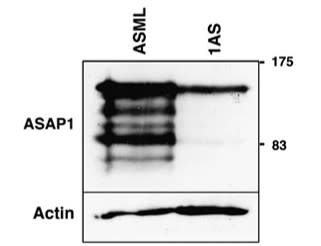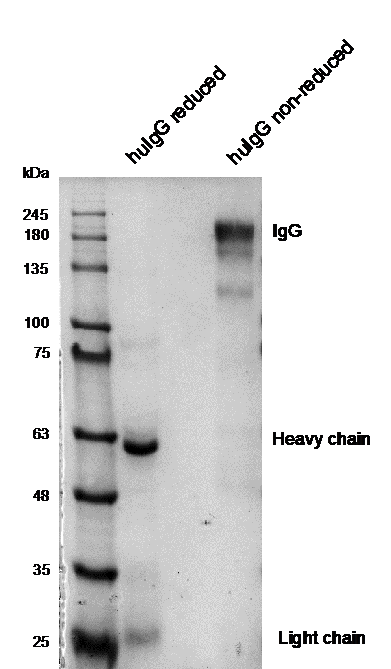Cat. #151767
Anti-ASAP1 [7B12]
Cat. #: 151767
Sub-type: Primary antibody
Unit size: 100 ug
Availability: 1-2 weeks
Target: ASAP1
Class: Monoclonal
Application: IHC ; WB ; ELISA ; IHC ; IP ; WB
Reactivity: Human ; Rat
Host: Mouse
£300.00
This fee is applicable only for non-profit organisations. If you are a for-profit organisation or a researcher working on commercially-sponsored academic research, you will need to contact our licensing team for a commercial use license.
Contributor
Inventor: Jonathan Sleeman
Institute: Karlsruhe Institute of Technology
Tool Details
*FOR RESEARCH USE ONLY (for other uses, please contact the licensing team)
- Name: Anti-ASAP1 [7B12]
- Research fields: Cancer;Cell biology;Cell signaling and signal transduction
- Clone: 7B12
- Tool sub type: Primary antibody
- Class: Monoclonal
- Conjugation: Unconjugated
- Reactivity: Human ; Rat
- Host: Mouse
- Application: IHC ; WB ; ELISA ; IHC ; IP ; WB
- Description: ASAP1 possesses phosphatidylinositol 4,5-biphosphate-dependent GTPase-activating protein activity for ARF1 (ADP ribosylation factor 1) and ARF5 and a lesser activity towards ARF6. It may coordinate membrane trafficking with cell growth or actin cytoskeleton remodeling by binding to both SRC and PIP2. It potentially has involvement in tumour progression, having been shown to promote metastasis formation in vivo and stimulate tumor cell motility, invasiveness, and adhesiveness in vitro. ASAP1 represents a potential target for cancer therapy.
- Immunogen: Recombinant Protein (fragment of human ASAP1 (corresponding nucleotides 977-1532 of KIAA1249) with N-terminal GST tag produced in E.coli strain BL-21)
- Isotype: IgG2b
- Myeloma used: Sp2/0-Ag14
- Recommended controls: Human: HT29 and MDA-MB-231 Rat: ASAP1 is strongly expressed in ASML and weakly expressed in 1AS pancreatic carcinoma cells.
Target Details
- Target: ASAP1
- Tissue cell line specificity: Human: HT29 and MDA-MB-231 Rat: ASAP1 is strongly expressed in ASML and weakly expressed in 1AS pancreatic carcinoma cells.
- Target background: ASAP1 possesses phosphatidylinositol 4,5-biphosphate-dependent GTPase-activating protein activity for ARF1 (ADP ribosylation factor 1) and ARF5 and a lesser activity towards ARF6. It may coordinate membrane trafficking with cell growth or actin cytoskeleton remodeling by binding to both SRC and PIP2. It potentially has involvement in tumour progression, having been shown to promote metastasis formation in vivo and stimulate tumor cell motility, invasiveness, and adhesiveness in vitro. ASAP1 represents a potential target for cancer therapy.
Applications
- Application: IHC ; WB ; ELISA ; IHC ; IP ; WB
Handling
- Format: Liquid
- Concentration: 0.84 mg/ml
- Unit size: 100 ug
- Storage buffer: PBS with 0.02% azide
- Storage conditions: -15° C to -25° C
- Shipping conditions: Shipping at 4° C
References
- Mller et al. 2010. Oncogene. 29(16):2393-403. PMID: 20154719.
- ASAP1 promotes tumor cell motility and invasiveness, stimulates metastasis formation in vivo, and correlates with poor survival in colorectal cancer patients.




